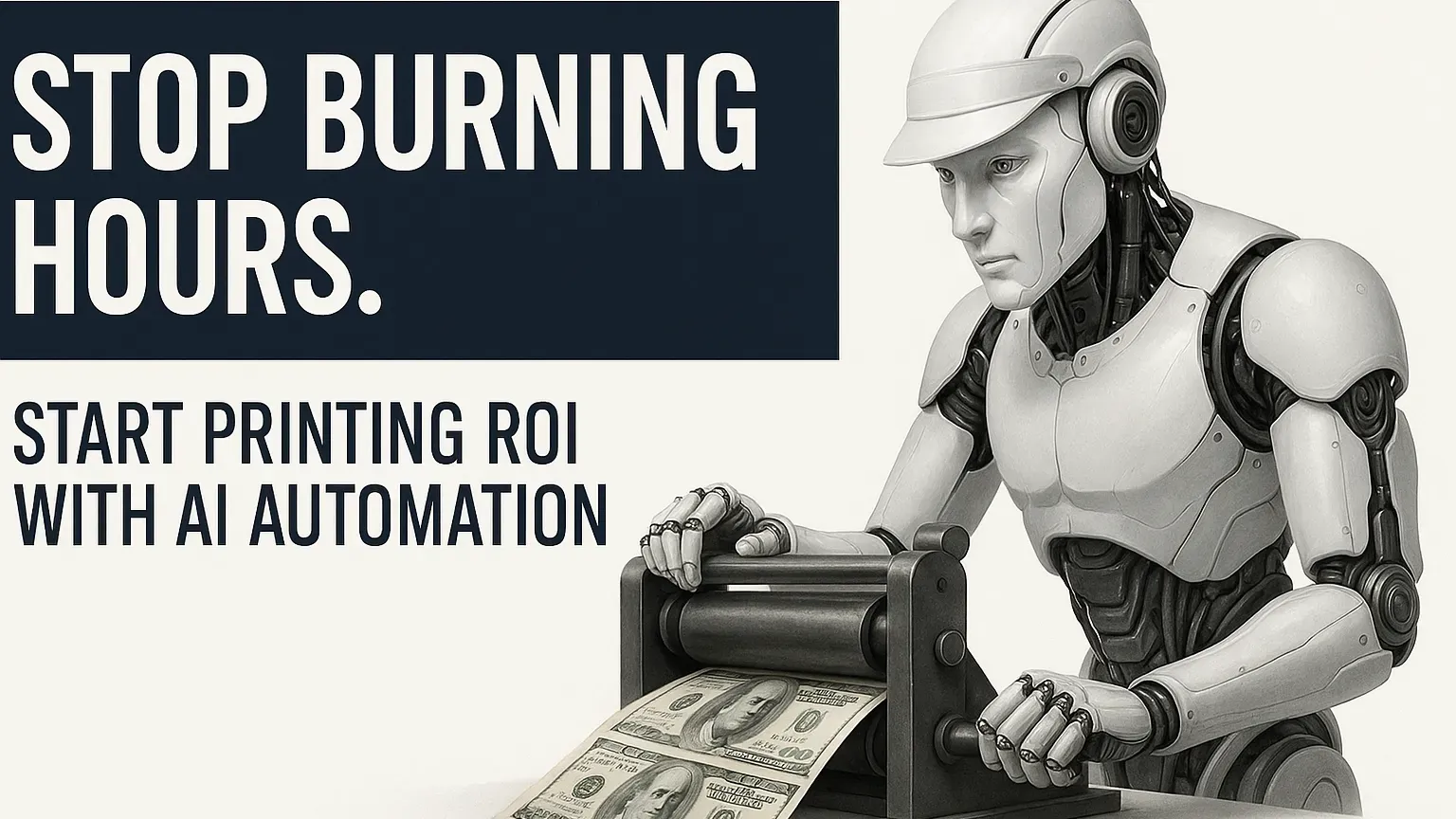
If you’re still debating whether AI automation tools are worth the investment, here's a reality check: the ROI isn’t coming someday. It’s already arriving—and early adopters are cashing in. From supply chain automation in manufacturing to AI chatbots in SaaS to invoice processing in services firms, AI tools aren’t about replacing people. They’re about letting people stop wasting time on dumb stuff.
But keep in mind that AI isn't so advanced (yet) that it will directly replace a person with an AI agent. Rather, you will make existing people much more efficient to the point that you can probably close out open reqs for people whose job it is to help other people in your business.
Let’s break down the ROI in terms any CFO, CRO, or VP Ops can get behind:
1. Time Invested vs Time Returned
The most overlooked ROI metric is time itself. Most AI tools offer a 5-to-1 return on time: for every hour you invest learning or setting up the tool, you get five or more hours back. That’s not theoretical—it’s operational leverage.
Example:
An HR leader at a mid-sized manufacturer used AI to automate job description writing, interview scheduling, and candidate scoring. Initial setup took 3 hours. In the first two weeks, the tool saved her 18 hours. That’s a 6x time return—every week.
Multiply that by 52 weeks. That’s a full month of time given back to focus on hiring strategy, not logistics.
2. Labor Cost Savings
AI doesn’t sleep, doesn’t complain, and doesn’t need dental. Whether it's automating customer support with a 24/7 chatbot or using AI for lead scoring and prioritization, companies are cutting labor costs by 20–40% in high-volume functions.
Example:
A manufacturing firm used AI to automate quality control inspections. It reduced manual review time by 80%, saving $400K annually in wages and avoiding costly delays.
3. Faster Revenue Cycles
AI speeds up workflows. Think instant quote generation in B2B SaaS, real-time personalized upsells in ecommerce, or automated RFP responses in services. This means faster deal closures and shorter time-to-revenue.
Example:
A SaaS company used AI to auto-generate tailored demo follow-ups. Close rates jumped by 30%, shrinking sales cycles from 45 to 27 days.
4. Accuracy and Compliance
You know what humans are great at? Typos, missed emails, and forgetting things. AI is deterministic. That means fewer errors in accounting, fewer compliance headaches, and less time spent fixing costly mistakes.
Example:
A legal services firm implemented AI-driven contract review and cut human error by 90%, avoiding six figures in litigation risk.
5. Scale Without Headcount
Growth used to mean hiring. With AI, it means automating before hiring. You can double the output of your team without doubling your costs.
Example:
A product company used AI to handle customer onboarding. Instead of hiring five new CSMs, they scaled with two—at a fraction of the cost.
6. Real-Time Insights
AI dashboards and predictive analytics give leaders real-time data to make faster decisions. This reduces waste, catches issues earlier, and keeps margins tight.
Example:
A services firm used AI to forecast project overruns. It improved project profitability by 22% in one quarter.
AI Prompts
Use these to calculate ROI for your use case:
- What’s the ROI of using AI to automate customer support for a SaaS company?
- Calculate the cost savings of automating invoice processing for a services firm.
- How much could a manufacturer save by using AI in quality control?
- Estimate the revenue impact of using AI to shorten sales cycles.
- How can I measure ROI from AI-powered lead scoring tools?
Final Thought
AI automation isn’t some futuristic investment—it’s an operational steroid already reshaping cost structures and speed across industries. The ROI comes in labor savings, faster revenue, fewer errors, smarter scale, and better decisions. Ignore it, and your competitors will gladly take your margin.
|
Previous |
Next |

